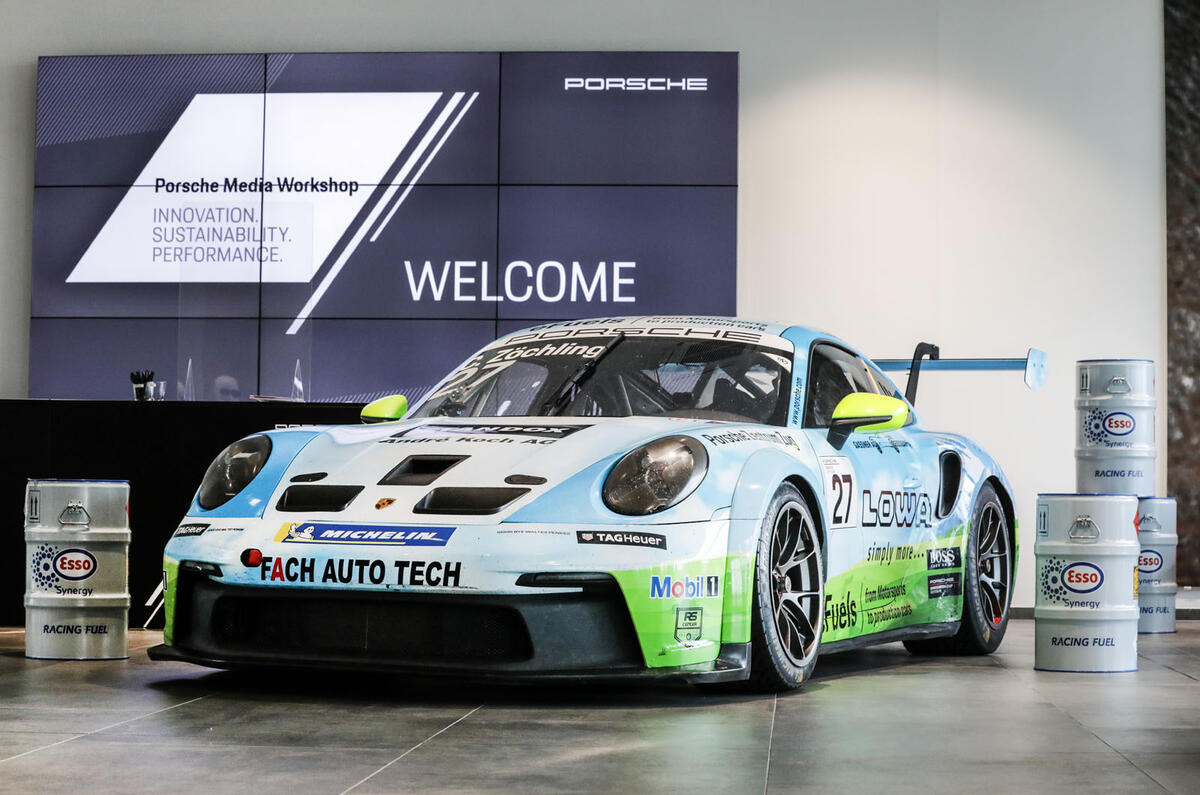Two years ago, Porsche announced that it would start making almost CO2-neutral synthetic fuel, as a drop-in replacement for petrol, by 2022. Its pilot project in the Patagonia region of southern Chile is now scheduled to make a modest 130,000 litres of its ‘e-fuel’ per year, rising to 550 million litres annually by the end of the decade.
The terminology surrounding sustainable fuels can be confusing so let’s clear that up. Porsche’s e-fuel is derived from air and water; it’s not a biofuel like ethanol or rapeseed oil.
The difference is that what the engine sees is pretty much the same as it would were the tank fillled with conventional petroleum. The e-fuel is a synthetic hydrocarbon, not alcohol like ethanol (the same as in drinks).
Neither does it have anything to do with the bio-diesel made from waste cooking oil that became popular some years ago.
The site at Punta Arenas was chosen because the area is remote and extremely windy, which makes it ideal for generating wind power; Porsche reckons wind turbines can work at maximum capacity for 270 days a year in that spot.
How does it work? Turbines generate electricity that drives electrolysers to split water into hydrogen and oxygen – and it’s the hydrogen Porsche is after.
Ironically, the other component needed is CO2, which is captured from the air using a chemical process that doesn’t involve precious-metal catalytic converters. The hydrogen and CO2 is combined to make methanol (another type of alcohol) which is then synthesised into synthetic petrol.
The fuel can be formulated as an alternative to diesel or petrol and mixed with conventional fuel. Making a litre of e-fuel takes three litres of desalinated water and the CO2 extracted from 6000 cubic metres of air.
Similar synthetic fuels aren’t new. Audi, working with Joule, set up a plant in Mexico to produce synthetic fuel via ethanol produced from harmless bacteria in waste water, for instance.
Could synthetic e-fuels keep the combustion engine alive on a global scale and do away with the need to migrate to battery EVs and other alternatives? Never say never, but the amount of conventional fossil-based fuel used today is colossal. According to the US Energy Information Administration, the UK used 274,700 barrels of petrol each day last year. That’s almost 9.5 million gallons or 43 million litres – and our consumption is below average.
Put into perspective, when it reaches maximum potential, Porsche’s plant in Chile would produce enough e-fuel annually to keep the UK going for less than two weeks. On the plus side, the potential for a new enterprise based on sustainable electricity generation to make synthetic fuel is immense.





Join the debate
Add your comment
extracting carbon from the air when carbon dioxide is only 400 parts per million in the atmosphere is a crazy business idea and if the objective is to get CO2 back down to a consensus 250ppm it will be even more energy intensive to extract it from the air at those levels...but sure what would I know about anything.
For those who think we should just put wind electricity into the grid, the problem is there will be far too much electricity produced most of the time when the grid has enough windmills to cope with the times that the sun doesnt shine, and the wind doesnt blow (such as a cold still winters night.
Using this surplus electricity to make things like hydrogen or e fuels makes complete sense under those circumstances.
wind or solar energy should go in to sodium or lead acid deep drain batteries when not in demand.
problem with wind is that it rips turbines apart as Siemens is discovering and it is presenting an existential threat to their wind energy business.
Solar seems to have potential at lower latitudes but up at or beyond 52degrees north it stuggles with lack of sunlight when demand is at its highest.
Synthetic fuel is not new and coal was used then for the carbon of the fuel. The innovation now is extracting carbon from the atmosphere, thus recycling it.
Not just coal but also wood. gasifier cylinders for wood were fitted to the back of cars and the cars would run on wood gas during the war.
I've seen both synthetic fuel presentations and wood gasifiers in the museums nearby.